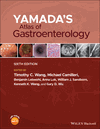Endoscopic mucosal biopsy: histopathological interpretation
Summary
This chapter offers diverse images that provide an overview of endoscopic mucosal biopsy and aims to provide a synopsis through pictures and illustrations rather than through text. The innermost layer of the gastrointestinal (GI) tract is the mucosa, consisting of three components: epithelium, lamina propria, and muscularis mucosae. In the esophagus, stomach, and small bowel, it is rich in lymphatics whereas it is less so in the lower GI tract. The muscularis propria is the main wall of the GI tract and is composed of an inner circular and outer longitudinal layer of smooth muscle. The histological appearance of hyperplastic polyps overlaps significantly with: conditions of generalized gastric mucosal hyperplasia (Ménétrier disease; Cronkhite–Canada syndrome), and hamartomatous polyps and syndromes involving the stomach. Multiple GI tract and cutaneous lipomas are known in patients with ganglioneuromas of the colon but most lipomas of the colon are sporadic lesions centered around the submucosa.



